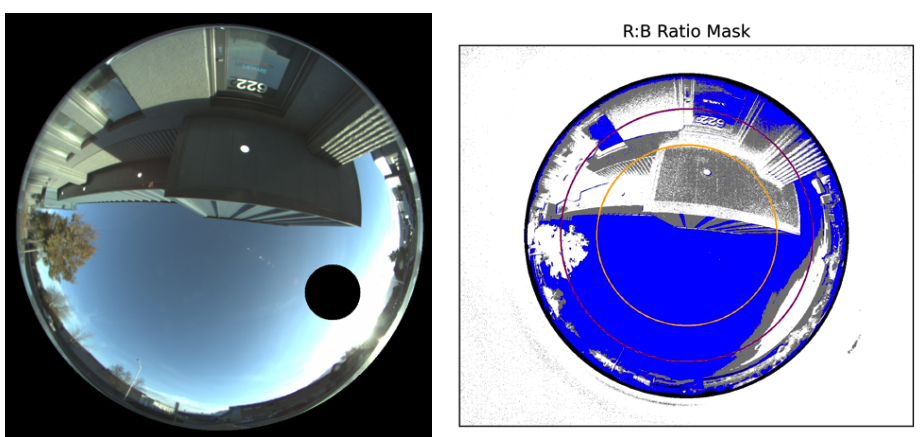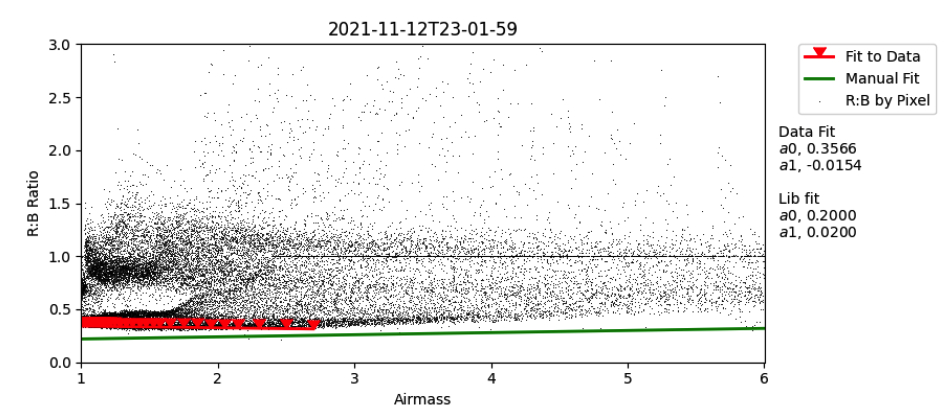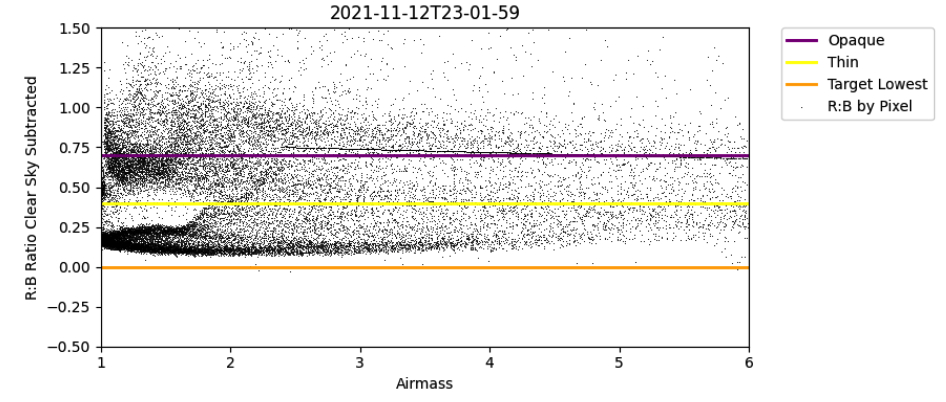Visible
Analysis & Data Products
Our visible analysis algorithms use modern techniques and the latest camera technologies to deliver data products that are unparalleled in all-sky imaging systems.
Sky Cover Percentage is computed in two user-defined fields of view (typically 100° and 160°). Three categories of sky cover (clear, thin, and opaque) are set by user- defined thresholds in processed Red/Blue (R/B) and Green/Blue (G/B) ratio images. A user- defined parameterization of the clear-sky R/B and G/B ratio data as a function of airmass is subtracted from the raw R/B and G/B ratio images. In addition, a user-defined parameterization of the sun’s R/B and G/B ratio as a function of angular distance from the sun is subtracted from the clear-sky subtracted R/B and G/B ratio images. Sky cover thresholds are applied to these processed R/B and G/B ratio images.

Figure 1: Left: Visible image right. Right: Red/Blue Ratio Mask showing sky cover assessment using selected thresholds (Blue = Clear, Gray = thin, and White = Opaque).
Airmass Diagnostic Plots of R/B and G/B ratio data as a function of airmass are used to assess the quality of the selected clear-sky parameters. In addition, on-the-fly parameterization of these data are used to aid in selection of the clear-sky parameters.

Our Visible analysis and visible instruments use modern techniques to deliver visible sky measurements that are unparalleled for all sky imagers.
Figure 2: R/B ratio pixel data vs. airmass for the image shown in figure 2 (left). The manual fit (green line) uses stored (library) parameters for the clear sky R/B ratio radiance. On-the-fly parameters are computed for each image using the lowest R/B ratio data in specific airmass bins.

Figure 3: Same data as plotted in Figure 2 after subtracting the clear-sky R/B ratio data using the manual fit. Selected threshold values (thin and opaque) are applied to yield the cloud decision map shown in figure 1 (right).
Diagnostic Sun Profile Plots of R/B and G/B ratio data as a function of pixel distance from the sun. This analysis provides better cloud/no cloud detection and choice of sun exclusion mask in the vicinity of the sun.
Exposure time Monitoring allows for conversion of all RGB channel data to instrumental (not calibrated) intensity. Using ancillary data for calibration, this feature enables additional data products such as downwelling radiance and visibility to be computed.
